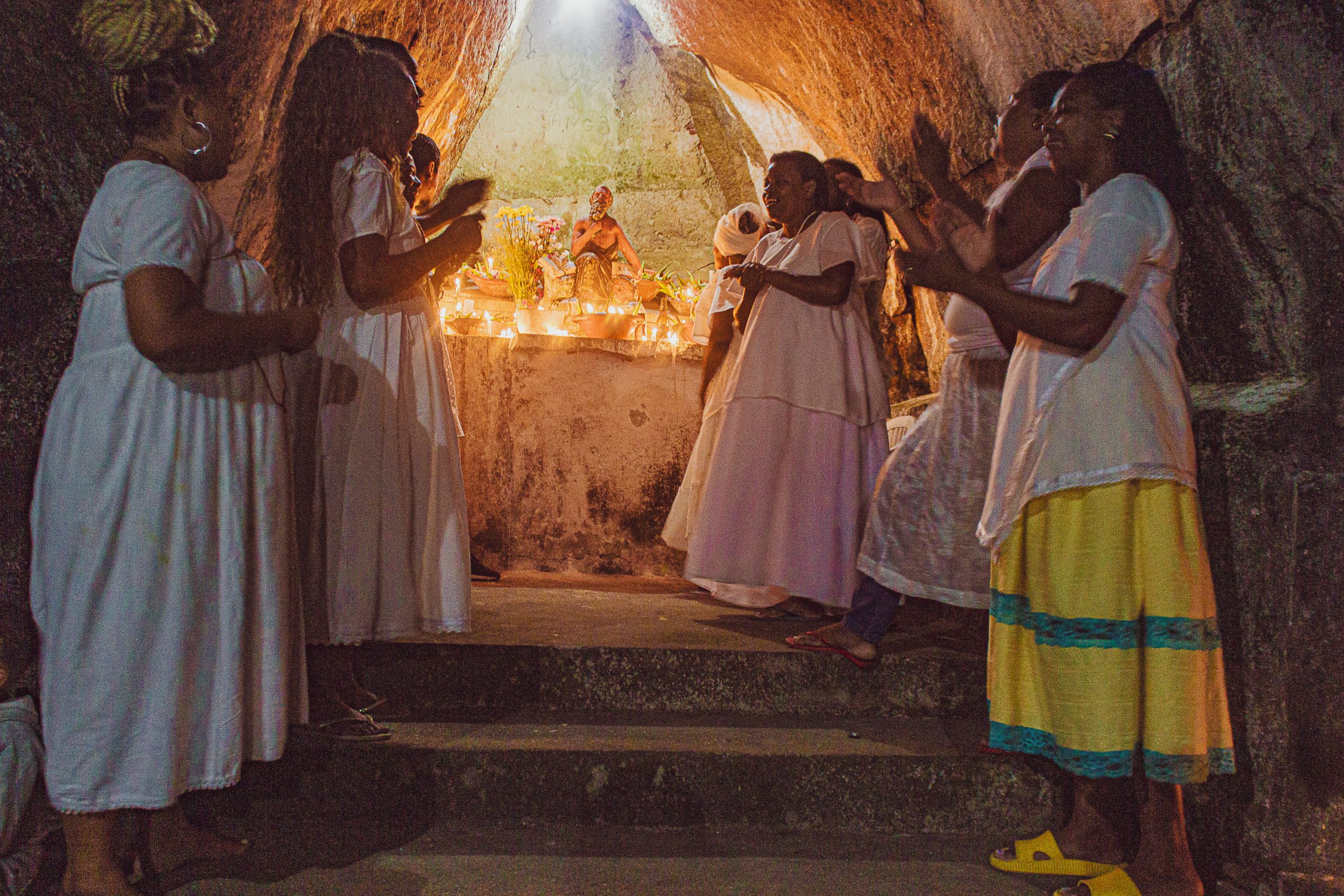
Clique aqui para Português
This article is part of RioOnWatch‘s series on Memories of Favela Power, which documents and celebrates the history of Rio de Janeiro’s favelas through narratives and reports from residents’ collective memory, in their daily struggle to lead fulfilling lives.
Requesting the respectful permission of the younger and elder generations, RioOnWatch honors an important religious celebration in Afro-Carioca and favela culture that has taken place for 80 years, always on September 30: the Festa da Pedreira de Xangô (the Feast of Xangô’s Quarry) in the Serrinha favela, located in Madureira, in Rio de Janeiro’s North Zone. The photo essay below captures the essence of the celebration through the eyes of three individuals born and raised in Serrinha, whose roots trace back to matriarchs and patriarchs who founded the community, the Império Serrano samba school, the Companhia de Aruanda, the Jongo da Serrinha cultural group, and the Festa da Pedreira de Xangô itself. They are: Elaine Casemiro, 53, a social worker and daughter of Iraci Cardoso dos Santos, known as Tia Ira Rezadeira, or Aunt Ira, the healer, 87, main organizer of the Festa da Pedreira de Xangô for 38 years, and spiritual heiress of Vovó (Nana) Maria Joana (1902-1986); Dário Onísègun, 40, a babalorixá (male priest in the Afro-Brazilian religions), activist, producer, art educator, artistic director, and grandson of Cosmelino Simplício, a historical ogã (sacred drummer in Afro-Brazilian rites) at Vovó Maria Joana’s terreiro (sacred space for Afro-Brazilian worship) and percussionist for Império Serrano—besides being the grandfather of musician Pretinho da Serrinha; and Lucas Badecoo, 22, a percussionist and grandson of Silas de Oliveira, a renowned composer for the Império Serrano samba school.
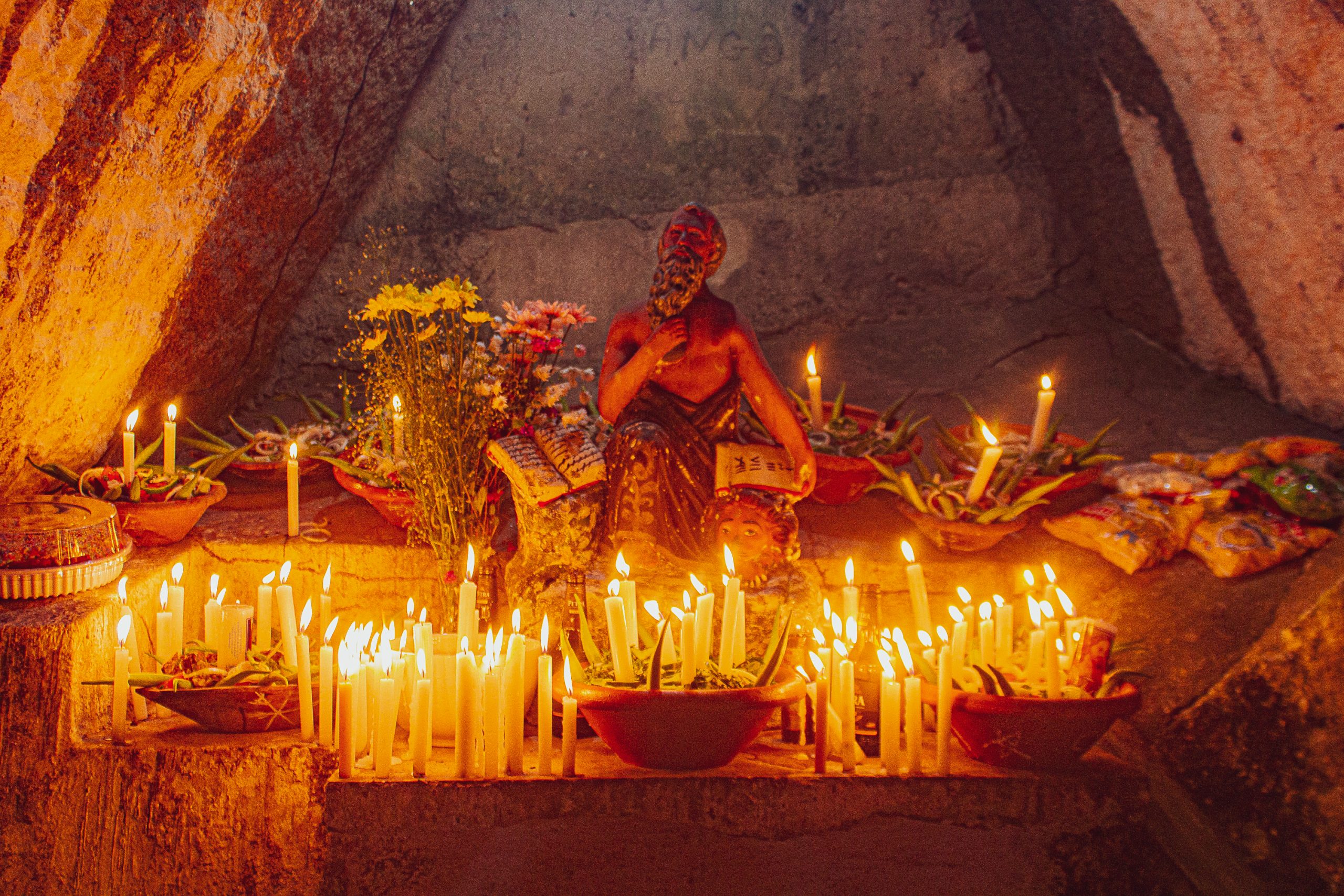
Born and raised in Serrinha and daughter of Tia Ira Rezadeira, Elaine Casemiro had daily contact with Vovó Maria Joana. She is a living witness to the legacy of Serrinha’s first matriarch. Vovó Maria Joana also served as a midwife, healer, and community leader, and was one of the founders of both the Império Serrano samba school and the Jongo da Serrinha cultural group. She would be 122 years old today. She was such an influential figure in the history of Jongo in Rio de Janeiro that, in 2024, City Council approved the creation of the Municipal Day of Jongo and the Vovó Maria Joana Award, both celebrated every June 24—a date that honors Xangô, Saint John the Baptist (one of the Catholic saints syncretized with Xangô), and marks Vovó Maria Joana’s birthday. Additionally, Vovó Maria Joana will be the theme of Unidos da Vila Santa Tereza samba school‘s 2025 Carnival parade in Rocha Miranda, also located in Rio’s North Zone: “Hail Vovó Maria Joana Rezadeira! Hail Jongo da Serrinha! Saravá, saravá, saravá!”.
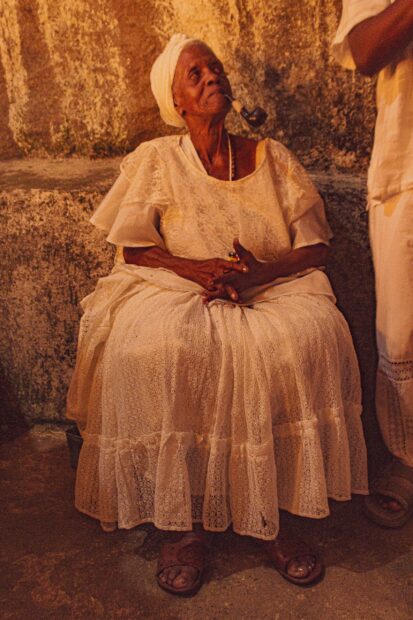
Vovó Maria Joana was an entire library of knowledge and wisdom. But when she passed away, contrary to what the Malian poet Amadou Hampâté-Bâ said, it was not as if the whole library burned down. Much was saved, not everything was lost, as she passed on a portion of her spiritual wisdom and experience to Tia Ira Rezadeira. Vovó Maria Joana did not allow death to take away all of her knowledge with her; she lives on through her legacy, through Tia Ira, the Festa da Pedreira de Xangô, and through many other people.
Since 1986, the year of Vovó Maria Joana’s passing, Tia Ira Rezadeira took on the responsibility of organizing the Festa da Pedreira de Xangô. Therefore, the 2024 edition will mark 38 years under Tia Ira’s leadership.
“When Vovó Maria Joana arrived at what is now known as Serrinha, the area didn’t have a name yet. She is one of the key figures who came here, helped build and establish this place. Later, they gave the community its name. They came from various places—Vovó Maria Joana came from Valença, in the Coffee Valley region, near the border with the state of Minas Gerais. My grandfather, Augusto Cardoso dos Santos, was actually from Minas, and Mano Décio da Viola came from Bahia. They all met in Rio, and they were all close friends, you know?
They brought with them a wealth of spirituality and ancestry inherited from their forebears, who left them the legacy of Afro-Brazilian culture, including the rituals of Umbanda. After all, most of them were spiritual leaders.
Each one of them settled in a strategic place of their choice. Vovó Maria was devoted to Xangô and Iemanjá, and established herself at the top of Serrinha, more specifically at number 134 on Rua Balaiada, which was previously called Rua Alice.
The orixá pointed to the top of the hill, to a quarry that, back then, had no path leading to it—it was all covered with vegetation… Xangô showed her the way to a large stone quarry shaped like a cave. The orixá told Vovó Maria Joana that, from that moment on, every September 30, Saint Jerome‘s Day—who, in syncretism, is Xangô—she should climb to the quarry and pay tribute to him, making sure never to let the tradition die.
Vovó Maria Joana kept the tradition going until the age of 84, when she passed away, but by then she had already prepared Tia Ira Rezadeira to carry on this legacy. Tia Ira Rezadeira, my mother, was Vovó Maria Joana’s first spiritual daughter. So, every year, on September 30, we get everything ready and climb up to the quarry. We dedicate the entire month of September to organizing the great feast for the King.” — Elaine Casemiro
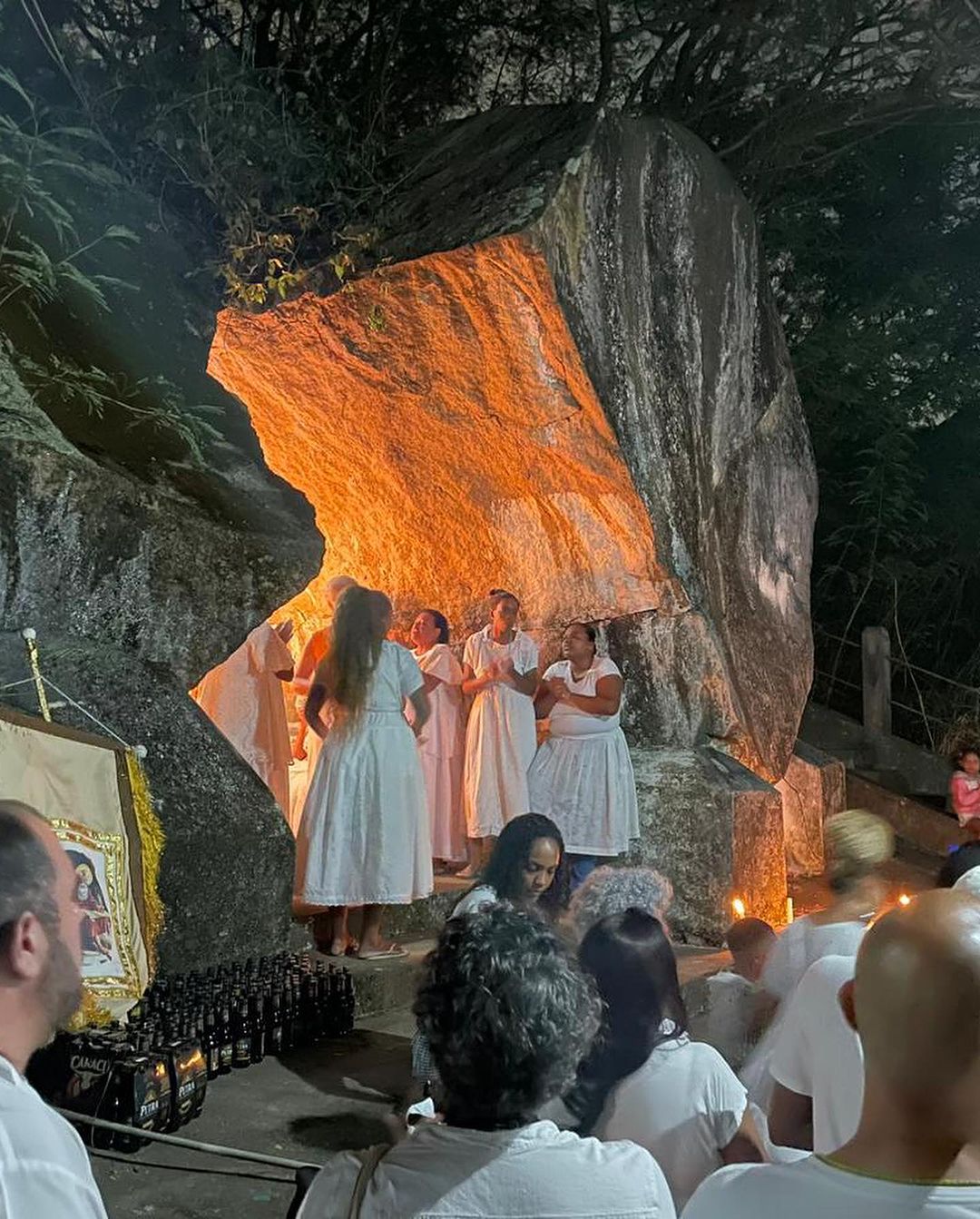
According to residents, this celebration has left its mark on every generation born and raised in Serrinha and continues to shape Afro-Carioca history in the North Zone. Babalorixá Dário Firmino also attests to this as he recalls his family’s involvement in the celebration, a legacy that dates back to his grandfather, who was the ogã at Vovó Maria Joana’s terreiro. However, he also reflects on the role that religious racism and the demonization of African-based religions have played in the decline in attendance and interest over the years.
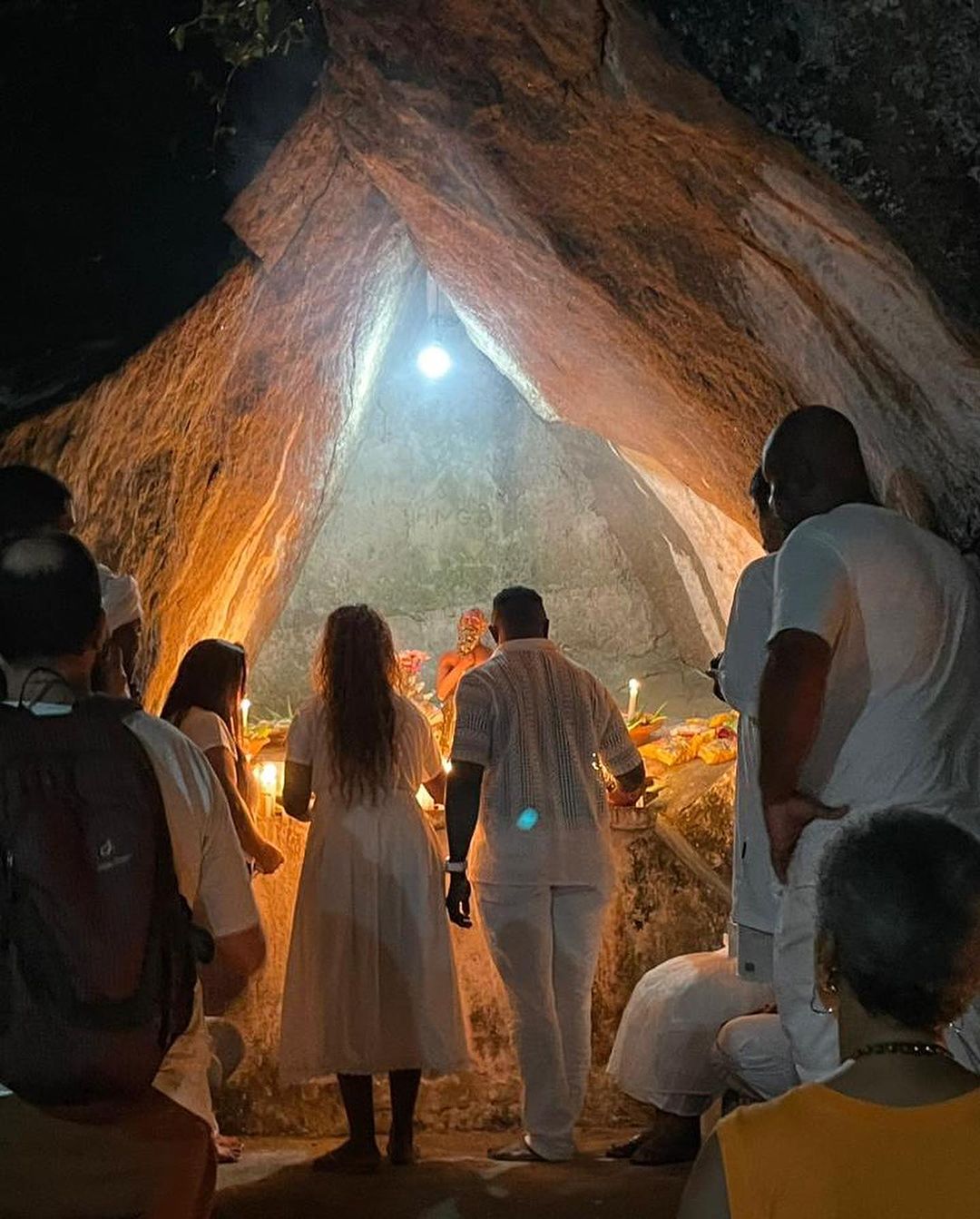
Pai Dário, on the other hand, states that even with fewer followers than before, the Festa da Pedreira de Xangô persists and continues to be organized every year in Serrinha, under the leadership of Tia Ira:
“For as long as I can remember, for 40 years, in some way, even as a child, I would watch the amalás—food offerings for Xangô—being brought up here, the drumming for Xangô, the care for this sacred quarry, for this place… Vovó Maria Joana passed away in 1986, but Tia Ira was already the acting priestess and healer. After Vovó Maria Joana’s death, Tia Ira’s responsibility only intensified. She, together with Tia Eva—Vovó Maria Joana’s daughter—, is the one who continues the Festa da Pedreira de Xangô.
We gather every year on September 30. The community still shows up, but not as much as before. It used to be a much larger gathering, but due to religious fanaticism and the rise of these religions that, in a way, end up demonizing African-based religions, we’ve lost part of our crowd, as many residents have started following other religious denominations. On one hand, the celebration lost part of its local following, but it hasn’t ended. Tia Ira didn’t allow it to end. So, we keep going up and holding the celebration.
In recent years, the celebration has gained a much larger external following and visibility. Today, hundreds of people climb that quarry to honor Xangô on September 30 through a statue of Saint Jerome, the bearded saint who is depicted sitting on a rock with a lion at his feet, and who, in Umbanda, represents Xangô due to syncretism.
The Festa da Pedreira de Xangô is perhaps the largest religious celebration within Serrinha. People pray for their wishes and they are answered. My personal and family connection is through my grandfather, Cosmelino Simplício, who was an ogã at Vovó Maria Joana’s terreiro. My granddad was the man who cleaned the entire path from Vovó Maria Joana’s house to the quarry. He’d clean and take care of the quarry so that, on the 30th, people could make their offerings and have the gira [a circle of mediums, drums, and practitioners which invokes spiritual entities] there… So, my ancestry also speaks through that place, because my grandfather was there helping build the ritual around the quarry, and today, in a way, I help ensure that it goes on, that it doesn’t end.”
View this post on Instagram
Born and raised in Serrinha, Lucas Badeco, a percussionist and grandson of composer Silas de Oliveira, has already lived through a wealth of experiences from the September 30 celebration, despite his young age:
“To speak about the [Festa da] Pedreira de Xangô is to speak about something that I consider important for culture in general. This tradition is very important because all the activity that takes place on the hill for this day of celebration, organized by Tia Ira, is respected by everyone. It’s symbolic to see dozens of people dressed in white climbing Serrinha, just like when there was a samba [circle] up there with the Poeira Pura [musical group], in Tia Ira’s backyard, for the matriarch’s birthday.
I’ve known about the Pedreira for a long time. The procession has passed in front of my house since I was little. I remember people standing on the stairs, watching. And, whether you like it or not, kids are curious, so I was always in the yard—sometimes playing an instrument, or just sitting there—when the procession came by. Then I’d go out to see what was going on. And since my family had already gone through the same process, it eventually became my turn to take part. I don’t follow any religion, but I take part in the Festa da Pedreira. I go there and play, because I think it’s important. My grandmother Gina lives on Rua Mano Décio da Viola and always goes up the hill carrying the amalá on her head, so, whether I like it or not, it’s an ancestral movement that I carry with me, and that moves me deeply. Witnessing this moment when Serrinha fights religious racism is truly moving.”
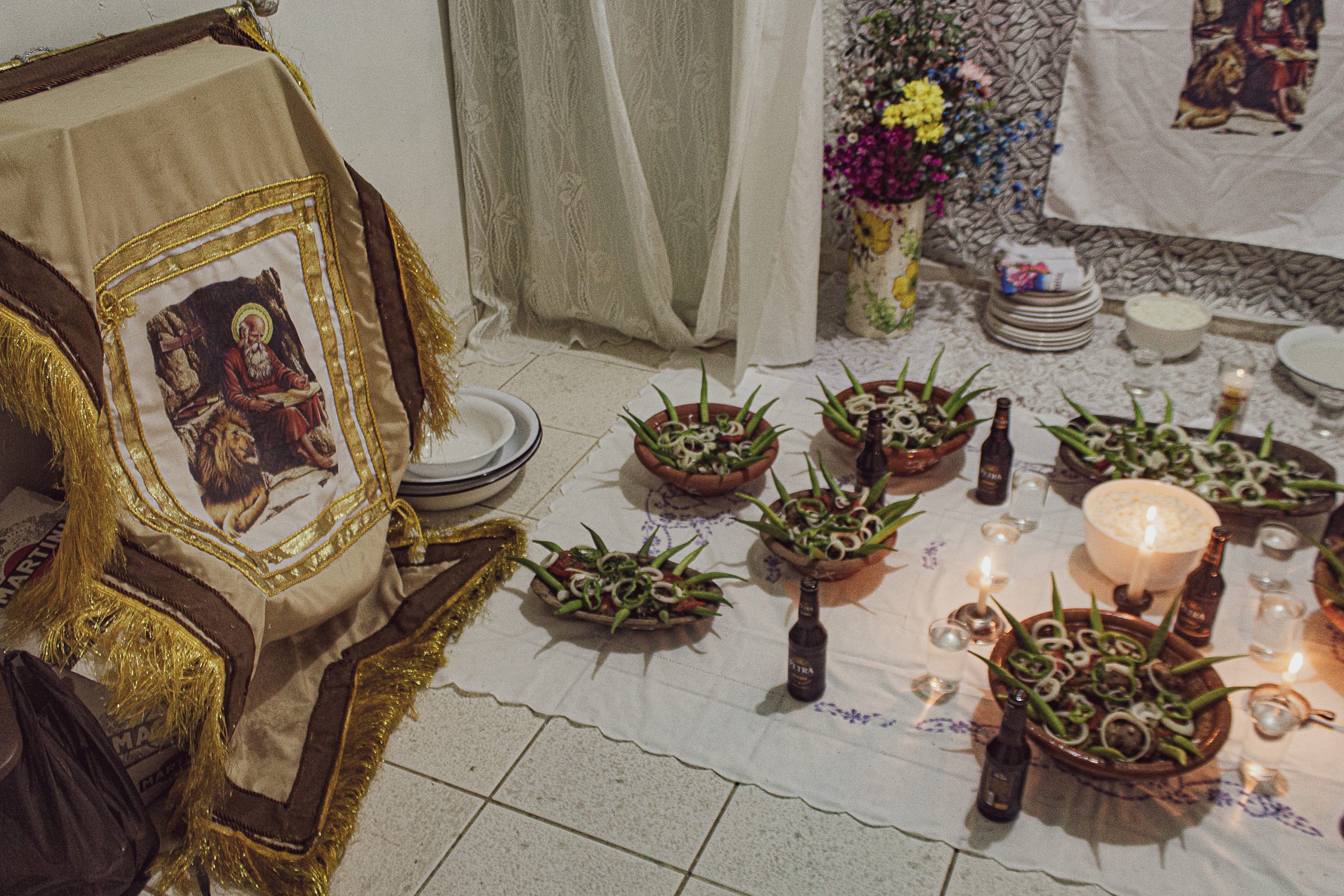
To support the Festa da Pedreira de Xangô in Serrinha, the PIX key is 021.082.527-89 (Elaine Casemiro).
About the author: Rhuan Gonçalves is a native of Macaé, a city in the north of Rio de Janeiro state. He holds a degree in History from the Pontifical Catholic University of Rio de Janeiro (PUC-Rio) and is director and producer of the documentary “Menino de 47 Vai a Campo”, about the founding of the professional football team of the Império Serrano Samba School. He is a photographer for the Imagens do Povo Collective, linked to the Favelas Observatory, located in the favelas of Maré, and a percussionist for samba schools Império Serrano, Estação Primeira de Mangueira and Acadêmicos de Vigário Geral.
